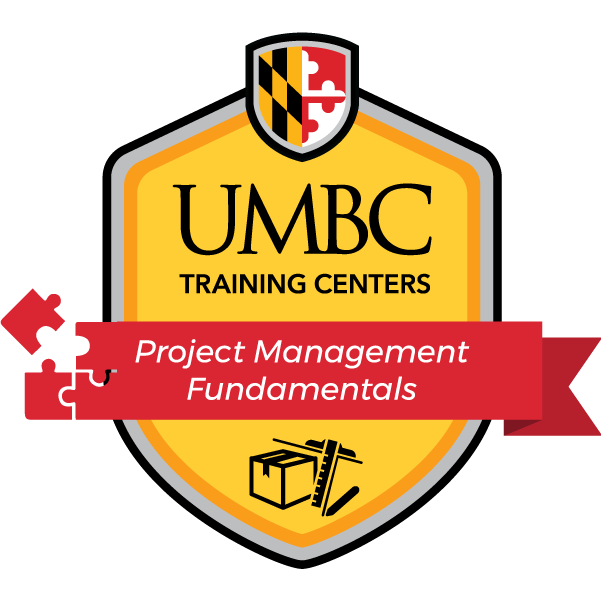The Triple Constraint of Project Management represents the ever present elements of any project, regardless of the project management methodology being applied. Traditionally, the three aspects of this constraint are:
- Scope
- Time
- Costs
The Tiple Constraint itself states that Costs are a function of both Scope and Time; in other words affecting one aspect will affect the others. An equilateral triangle often provides a visual representation of this theory; any change to one point directly changes the other two. For instance, an increase in budget can result in faster delivery or increased features whereas an increase in features can increase the timeframe or costs of the project. In today’s project landscape, however, the Triple Constraint is not always nuanced enough for certain projects.

Ready To Get Started In Project Management?
Our Project Management Fundamentals program combines a comprehensive review of major project management processes and knowledge with hands-on learning activities to ensure participants finish with practical skills which can be applied immediately on the job.
The Triple Constraint Defined
Scope
A project’s scope is essentially a summary of the goals the project is expected to accomplish. However, don’t let this simplified definition mislead you into thinking that determining scope is an easy task. A well-defined scope lends itself to accurate cost and time estimates and often a smooth project delivery. On the other hand, a hastily made scope can lead to severe miscalculations and send a project down a bumpy and expensive road that rarely leaves everyone satisfied with the outcomes.
To properly determine scope, a project manager needs to develop a detailed outline of the project’s many key aspects, including:
- The actions needed to accomplish the stated goal
- The resources, including human capital, needed to complete the required actions
- The potential constraints that could impact delivery
- The involvement of stakeholders, etc.
While this list provides some insight into developing a project’s scope, there can still be a number of variables that are based uniquely on the type of project being managed. For example, selling certain products to the government may require that certain standards or certifications are met whereas, managing surgical procedures can include many unknown variables that will need possible mitigation. These scenarios lend to the argument that the Triple Constraint is too simplistic for many of today’s project types. While it works well in a manufacturing scenario, it often doesn’t fit into scenarios that are not so straightforward.
Time
Time refers to the timeframe to delivering on the project’s scope. Unless otherwise instructed, project managers typically try to deliver a project as quickly as possible. However, there are a few common scenarios that will impact the timeframe for delivery:
- If the same company resources are being used for multiple projects, there will need to be time delays to account for this. For instance, a construction company has one crane but two projects for two different customers that need the crane. The company can then schedule the projects for two different days to avoid the overlap or they can purchase or rent an additional crane but that would lead to higher costs for the customer.
- If goods or services from another company are needed to complete the project, then that company’s time estimates for providing the required goods or services need to be accounted for.
Cost
Budget is the amount of money required to achieve the project’s goals. While straightforward, budget also tends to be the most affected when a project’s scope is not well-defined.

Ready To Earn Your PMP Certification?
Learn more about PMI Authorized Training at UMBC Training Centers!
What Is Scope Creep?
Scope creep refers to unexpected changes that will impact the project’s deliverables. For example, you get a quote and timeframe to have a contractor put a new roof on your house. However, once work begins, the contractor finds parts of the roof are rotten. The rotten roof is scope creep; it was an unanticipated element to the project that now requires additional time and money in order to achieve the original desired result of a new roof.
Scope creep can also show up as additional work that is not required to meet the original deliverables but comes as a later request from the customer. For example, a new website is being built that was originally meant to include 25 unique site pages but halfway through the project the customer requests a 26th page. The project manager can either deny the request because it is outside of the original scope, request additional funds to cover the added work or simply include the extra page at no additional cost to the customer but at the added time cost of the development team.
Scope creep in some shape or form is almost inevitable when it comes to project management. However, skilled project managers tend to anticipate certain potential problems and have either a risk mitigation plan in place for them or effectively manage the customer’s expectations throughout the project to avoid additional request that could be time and cost intensive.
Is The Triple Constraint Enough For Successful Project Management?
As stated previously, the Triple Constraint is often not nuanced enough to properly prepare for and successfully execute most projects. The reason? Today’s projects are simply too complex. From increased global and environmental factors, not to mention the ever unpredictable human element, the simple approach of increasing time to account for a smaller budget doesn’t work. In theory, it makes sense; but in application it hits a number of roadblocks.
This is why PMI’s latest Project Management Body of Knowledge (PMBOK® Guide), focuses on 12 principles of project management and eight project performance domains critical for the effective delivery of project outcomes. At the end of the day, the Triple Constraint offers little more than a simplified approach to explaining changes in project costs or timeframes to a customer.
Ready To Grow Your Project Management Career But Need Some Direction?
Request a free consultation with our Admissions Team to determine your best path forward in a Project Manager role!
